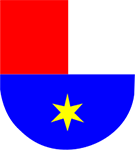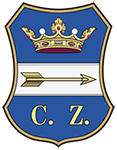

Međimurje is located at the intersection of two great geographic units – the Eastern Alps and the Pannonian Basin. Two morphological areas are defined through this position: the hilly upper (with the highest peak of Mohokos at 344.5 metres above sea level) and the plain lower Međimurje. The green of its hilly and plain interior is intersected by the blue of around a hundred smaller lakes and waterways, and two large artificial lakes of the hydroelectric power plants Čakovec and Dubrava. Its location at the north-west of Croatia provides it with the best traffic connections with Europe. Međimurje is situated between the rivers of Mura in the North and Drava in the South as its natural borders. Its climate is moderately warm and humid with pronounced seasons: hot summers and cold winters, a quick rise in temperature in the spring and pleasant temperatures in the autumn.
118,426 of hardworking people live on a surface area of 730 km2 in the most densely populated county in Croatia, with the average age of 37.6. There are three cities (Čakovec, Prelog and Mursko Središće) and 22 municipalities in Međimurje.
The City of Čakovec is the administrative, cultural and political centre of the Međimurje County. The administrative-political units were created during the constitution of the Republic of Croatia as a state.
In 787 of the largest companies generate revenue of 8.2 billion kuna annually. 23,061 employed people mostly work in the textile and processing industry and in trade, commerce, construction, real estate, agriculture and tourism.
The extraordinary proximity and the road (highway) and rail connections to the Adriatic and European centres provide Međimurje with the possibility of development, with an economic and tourism perspective and attractiveness to potential investors in the development of technology and branches of economy congenial to our environment. An important component is also the preservation of natural and manmade resources of high quality in groundwater and thermal water, and rich cultural and natural heritage carefully protected by the people of Međimurje. There are around 127 statistical settlements with well constructed infrastructure, with an emphasis on the conservation of the environment (developed network of health and educational institutions; 99% of households in Međimurje have access to water from the water supply system; the majority of Međimurje communities are provided with gas supply; a central waste water purification system has been constructed for the City of Čakovec).
Međimurje develops and nurtures cross-border cooperation with its neighbours Hungary and Slovenia through numerous programmes of the Euroregion Mura-Drava and other European countries.
Zala county
Zala county lies in south-western Hungary. It is named after the Zala River. It shares borders with Croatia and Slovenia and the Hungarian counties Vas, Veszprém and Somogy. The capital of Zala county is Zalaegerszeg. Lake Balaton lies partly in the county.
The county attracts more and more visitors with its untouched natural beauties, the romantic forests of Göcsej and Bakony, where the one-time highwayman called Jóska Sobri was hidden, as well as with the untouched wildlife of Small Balaton, the beaches of the “Hungarian sea” and the thermal baths. In Keszthely the baroque Festetics Palace awaits visitors with several exhibitions presenting the lords’ lifestyle, the ornamental weapons of different periods, the trophy collection of Windischgrätz, as well as the only Carriage Museum of Hungary established in the carriage house and riding school. The most significant thermal bath in the county is Lake Hévíz, which is the largest medicinal lake of the world. This is the only place in Central Europe, where Indian water lilies grow in the open-air, in thermal water.
In Hévíz you can find a chapel, the bare interior of which has preserved the mediaeval atmosphere. The Roman Catholic church of Keszthely was built in Gothic style. The Franciscan church in Nagykanizsa is an outstanding relic of baroque and rococo styles.
In Zalaszántó you can find the Park of Human Rights, where architectural symbols are to be built to commemorate the peoples whose human rights were infringed. At the moment you can see a Buddhist stupa here, the inauguration of which was visited by the Dalai Lama. In the county seat, in Zalaegerszeg you can visit the Village Museum of Göcsej presenting the folk architecture of the region, or the Park of Finno-Ugric Ethnography with an exhibition on the architecture and lifestyle of our language relatives. A wonderful example of folk architecture is the belfry with wooden shingles and a skirt in Nemesnép.
In Zalalövő, in the Villa Publica Garden with ruins you can see Roman tombstones, the restoration of a tumulus and the remains of a house with colonnades. The ruins of the Saint Adrian basilica in Zalavár is a unique sight, too, as it was built around 852-53. The finding is special as that was the largest cathedral of Eastern Europe in that period.
In the Georgikon Manor Museum of Keszthely the farming of the manor and the servants’ life are presented. In Zalaegerszeg, the Museum of Hungarian Oil Industry presents the relics of oil mining in Hungary including a 40m high boring tower, steam machines, swings and blow-out preventers.
In Kehidakustány, in the baroque Deák mansion a memorial exhibition was opened in memory of the “wise man of the country”, where the exhibits and the documents present the life and career of Ferenc Deák. The Turkish-well is the famous fountain of Nagykanizsa. According to the legend, this Turkish pool made of an octagonal stone comes from the castle of Nagykanizsa.